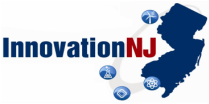While some of these incentives are quite small, others, such as those targeting major corporations like Amazon or Foxconn, carry a substantial price tag. A study of megadeals — those incentive packages valued at more than $50 million and in many instances totaling nine figures — uncovers an average cost to taxpayers of $658,000 per job, according to the nonprofit Good Jobs First. Historically, many of these incentives have been shielded from public scrutiny. Only recently, because of Statement 77 from the Governmental Accounting Standards Board, have state and local governments been required to disclose the revenue they lose to economic development incentives.
The alternative to financial subsidies in “labor-demand-side” development policies, Bartik writes, are customized services, such as tailored workforce development training or manufacturing extension programs. These services tend to target small and medium-sized businesses whose growth trajectory may be easier to affect with services such as quality job training or business advice. Bartik’s research finds that the typical state only spends $1 on customized job training for every $20 devoted to tax incentives.
Financial incentives and customized services not only vary by usage, but by effectiveness, according to Bartik. Although empirical research is ambiguous on the effectiveness of financial incentives, evaluations of customized services programs yield positive, significant results. In a review of the literature, Bartik finds that “the empirical evidence suggests that customized services are frequently more cost-effective, compared to tax incentives or other financial incentives, in achieving economic development goals.” The main reason for this, he proposes, is that these services provide information to firms which is cheap to provide, but can be valuable to receive.
A recent evaluation of the Manufacturing Extension Partnership (MEP) program provides further signals on the cost effectiveness of customized services. The theory behind MEP and other extension programs posits that interventions such as providing timely, affordable and relevant information and consulting services to established small businesses can help improve their performance.
The evaluation, which appears in the most recent issue of Economic Development Quarterly, supports this theory. The authors find that MEP client establishments have more value added per employee, stronger growth in sales per employee, and a greater probability of survival than similar non-client companies do. They also find evidence that these effects are strongest among small and medium-sized businesses. Using an economic impact modeling program, a separate evaluation of the program found that the $130 million invested by the federal government in MEP in FY 2016 generated more than $1.1 billion in increased federal personal income tax — a return on investment of nearly 9:1.
Research also shows that other customized services, such as job training programs, can be especially cost-effective. A 2016 analysis of 33 state-sponsored training programs observes that costs per trainee exceeded $10,000 in just two states, and had the highest return in the states that trained the most workers. Two studies from 2008 also point to evidence that training programs may be more effective than recruitment/retention incentive programs on a dollar-by-dollar basis.
As Bartik wrote more than five years ago, a “sound economic development strategy must include a judgment as to the mix of human capital investments and business incentives that will make up the strategy.” Although boosting investments in customized services may make sense from a cost-effectiveness standpoint, uncontrolled competition at the state level poses a challenge to efforts to alter that composition.
Even though there are instances of metropolitan regions signing pacts to reduce incentive-based competition, states are reluctant to do so. In a recent study in the Journal of Regional Science and Urban Economics, economist Jia Wang finds evidence of “strategic interaction” in economic development policy, where states increase their incentive spending when their neighbors do so. In an analysis of the use of economic development incentives by 48 states during the period from 2007 to 2012, Wang also notes that states compete more intensively over cash incentives than those that take the form of forgone revenue.
As economic developers and state budgeters enter 2018 with an increased focus on evaluation and transparency toward greater impact, it is worth evaluating whether their strategies and resource commitments reflect that shift.
